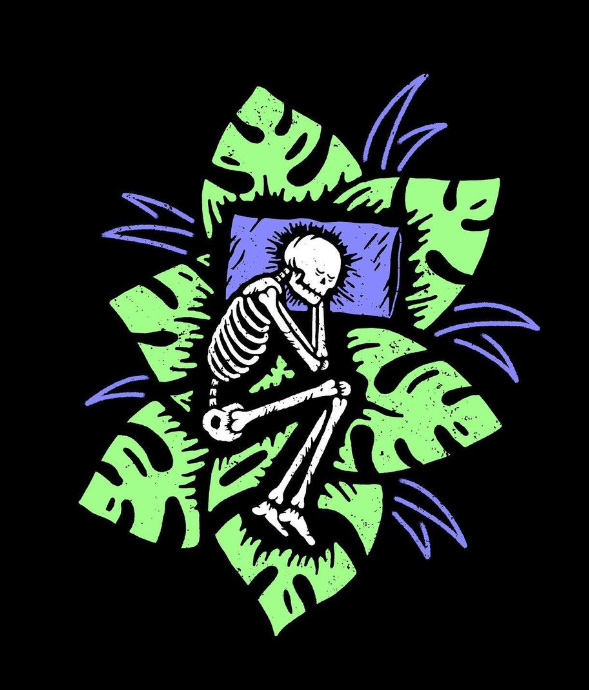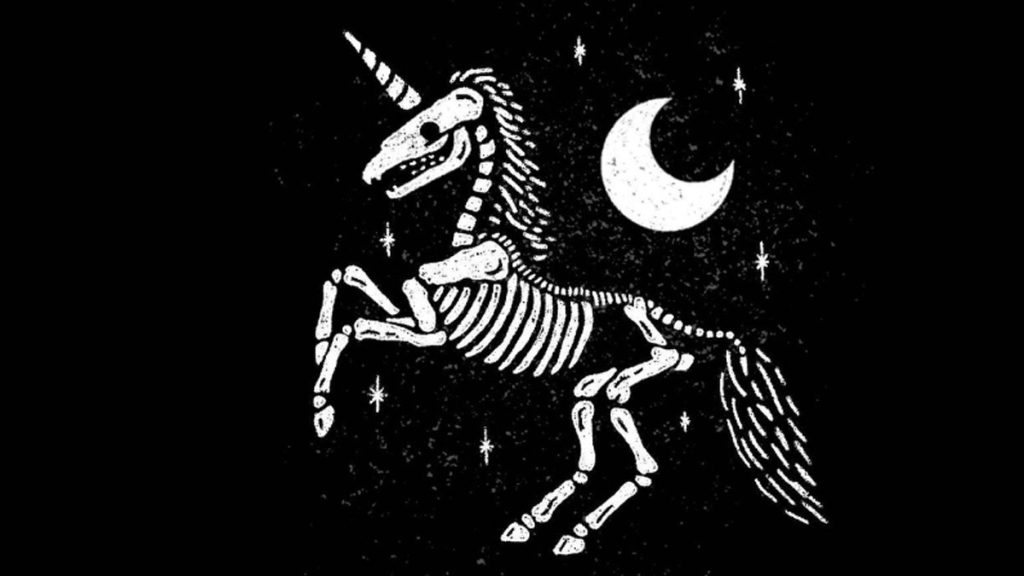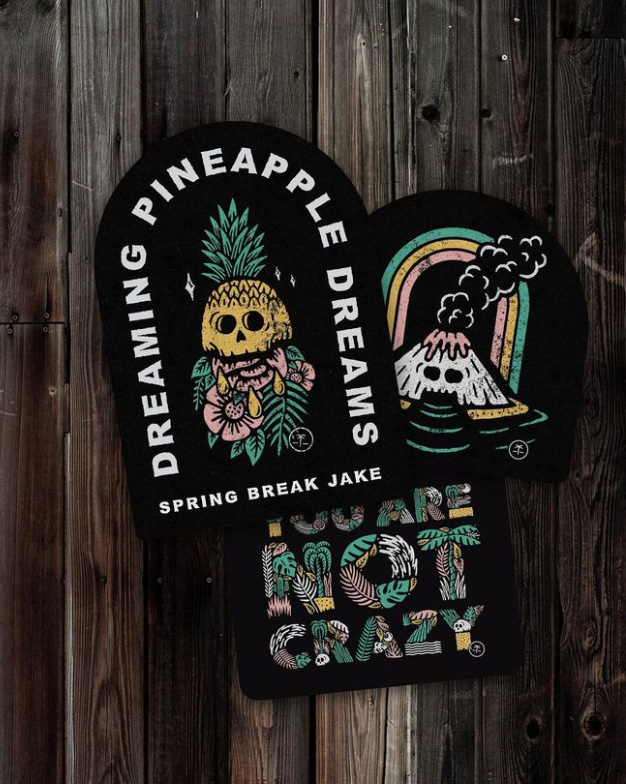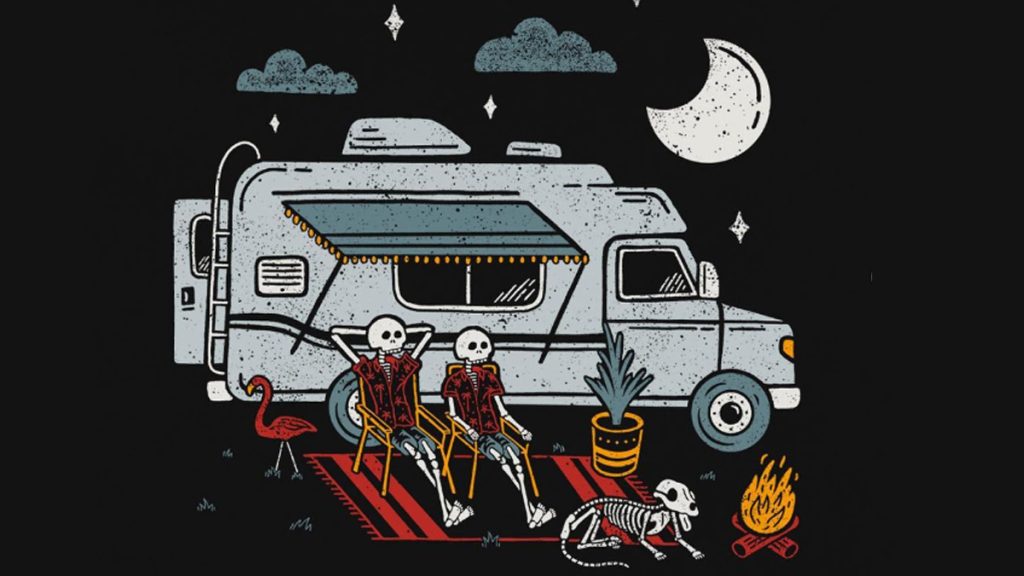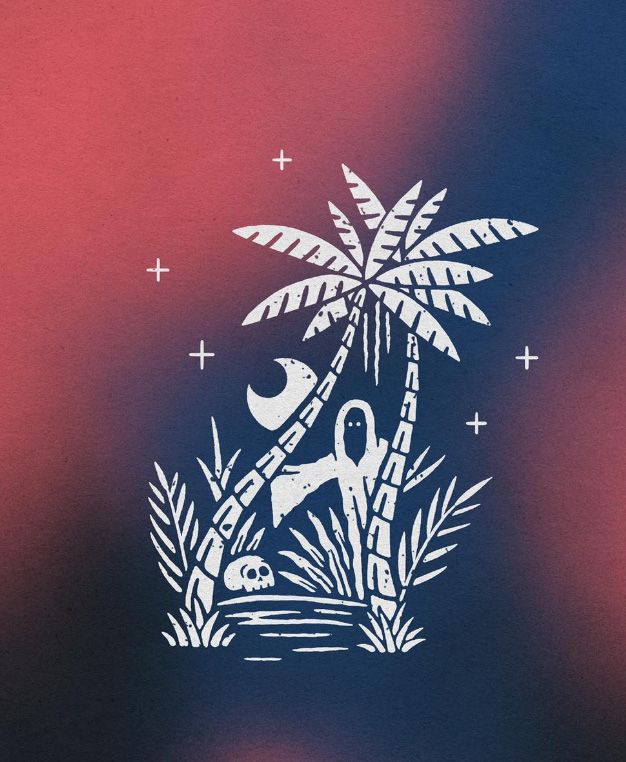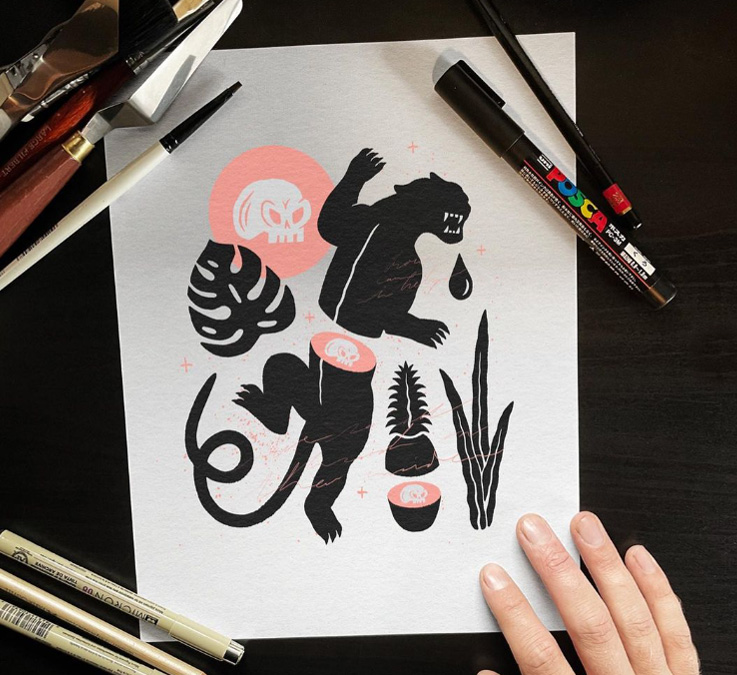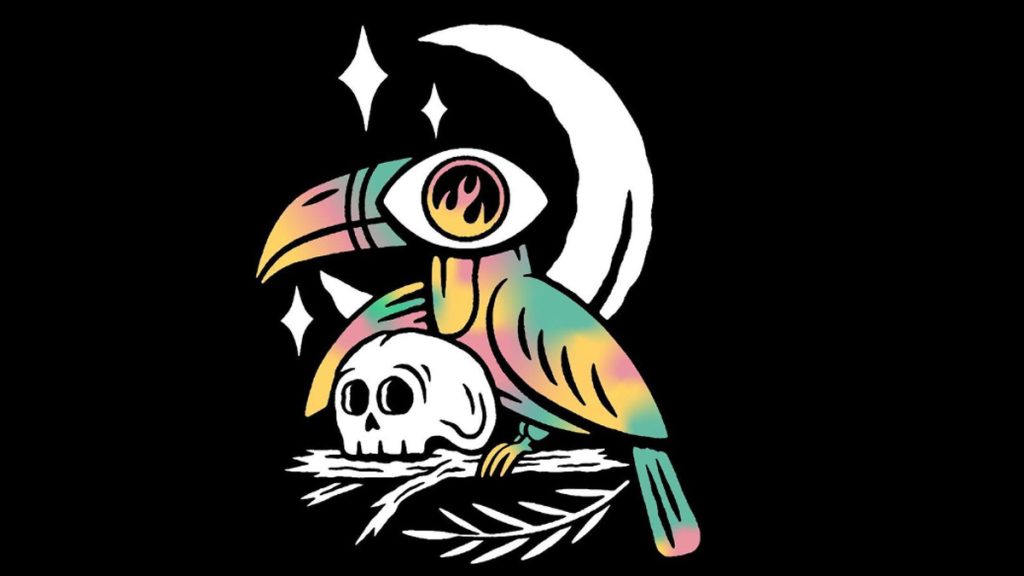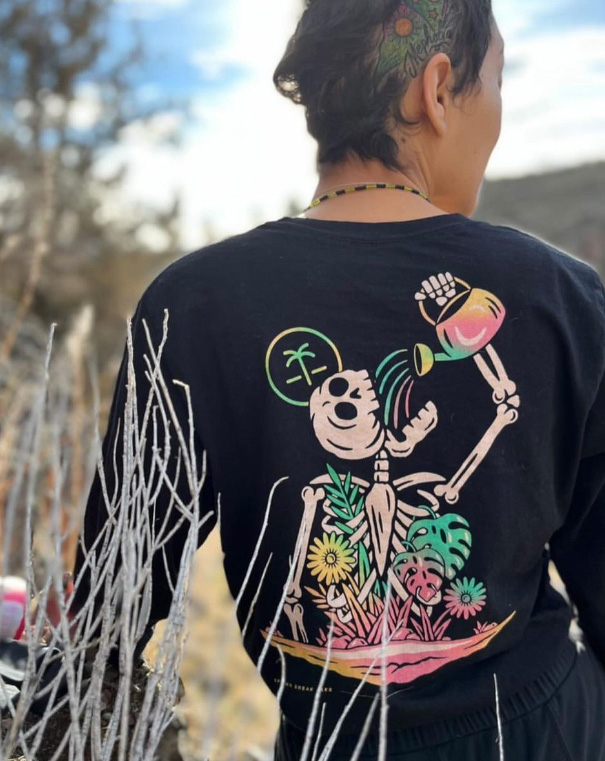Skull Paintings by Spring Break Jake
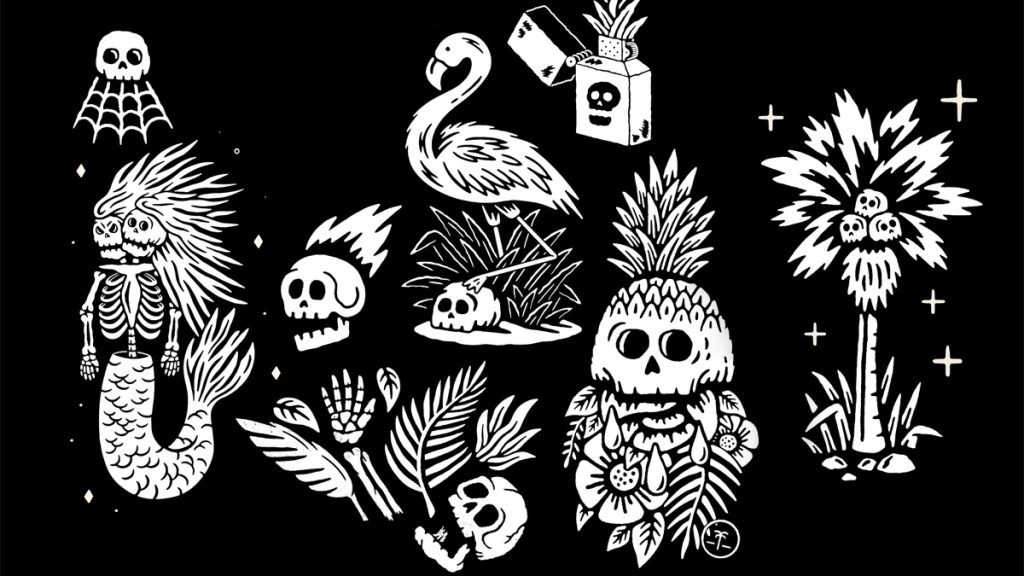
What is it that makes the imagery of a skull so powerful? Is it the idea of death? Or perhaps it is the idea of life, fleeting and unpredictable. Skull paintings and skull fine art can represent transformation, change–both good and bad, strength, the passing of time, the inevitability of death. A skull can even represent the toll of social, mental, emotional, and physical issues on the human body and spirit. Skull paintings often embody the essence of Memento Mori–a humbling reminder that we are all doomed to die.
History declares that the Aztecs were among the first to employ skulls in their works of art, in the form of stone carvings. To the Aztecs, the skull symbolizes a “promise of resurrection.” This idea of rebirth and the cycle of death and life–and its correlation with the skull–is seen in various ancient civilizations, such as with the Egyptians and Mayans, and in various cultures around the world. It has been carried on and also taken on new meanings over different time periods and cultures, but no matter where it surfaces–it is safe to say that a skull is one of the most prevalent symbols in art.
Today, we explore some of the world’s most renowned skull paintings, alongside modern skull artwork by Spring Break Jake–a skillful, Oregon-based artist who puts a delightful spin on the concept of death and its inevitability.
Table of Contents
Spring Break Jake’s Modern Skull Paintings
Spring Break Jake and his modern skull paintings take on a distinguished style of grunge that simultaneously encapsulates the morbidness of death and lifelessness, with contrasting, more vibrant elements of life, such as nature and the sea. Spring Break Jake plays on the idea of death and how it is always looming, awaiting us.
Spring Break Jake immaculately blends this eerie, honest, and dark side of existence with beautiful things in the natural world that we can all learn to appreciate. Beachy, oceanic components paired with gothic undertones send off the message–in the light, we see darkness, and in the darkness, we see light. We can learn to experience and appreciate both simultaneously.

Famous Skull Painting Artists
Given that death is one of the most common subjects of art–whether in paintings, written works, sculptures, or music–there are countless masterful pieces that incorporate skulls and skeletons. Skull art has been seen across the ages, but let’s examine some of the most renowned skull paintings of all times and the artists behind the brilliant work.
Georgia O’Keeffe Skull Paintings
Georgia O’Keeffe is a talented artist who crafts divine paintings with desert themes and mystical features. She combines features such as natural landscapes, flora, fauna, and animal bones to create captivating works of art that show the beauty and isolation in death. One of her most popular paintings is the “Ram’s Head, White Hollyhock–Hills” from 1935. This painting portrays the stark white bones of a ram’s skull, which float against the mesmerizing skies of New Mexico, with a white hollyhock blossom seemingly floating above it, and the Rio Grande Valley Hills below.
Georgia was known for other works with animal skulls such as a Cow’s skull, red white and blue. Through her work, Georgia wanted to represent the desert’s desolate yet beautiful landscapes and the strength of the American Spirit, able to withstand the endurance and robustness of the desert environments.
Salvador Dali Skull Paintings
Salvador Dali had a slight obsession with skull imagery, rooted in an adolescent memory of witnessing a person with encephalitis–a person whose brain was inflamed and, as a result, had a deformed skull. His skull obsession inspired a few works of art, including the “Skull of Zurbarán” of 1956. He loved playing on the idea of optical illusions, offering a trippy and surreal depiction of two different images. Within this piece, the dynamic was to believe in god or to be an atheist.
In another masterful work of his, Dance Skull, a mystical illusion is of a female dancer with a bright red floral headpiece who rests at the center of the skull, taking the place of the nose. The Sickly Green Skull is another great work of Dali’s that incorporates a skull–an illusion contrived of big breasted prostitutes with exposed garters, forming the shape of a skull. This Poster was created to warn armed forces of the potential consequences of fooling around with prostitutes, who could potentially carry vernal diseases.
Van Gogh Skull Paintings
In contrast with his typically brightly colored, picturesque landscapes and nature-forward art, Vincent van Gogh’s “Skull with Burning Cigarette” of 1886 is dark, eerie and bizarre. This art piece conveys light and dark through black and other light colors, and serves as the single most famous skull painting ever done by an artist from the 19th century.
Some believe this piece a Vanitas–a reminder of death and mortality, inspired by his father’s death, or perhaps alluding to his own demise–as he himself smoked frequently. It also could be interpreted as a criticism of vices and their fatal consequences. Van Gogh had a few other skull paintings completed during his time studying at the art academy in Antwerp, including a sketch of a hanging skeleton and cat.
Basquiat Skull Paintings
American artist Jean-Michel Basquiat in 1981 created a skull painting masterpiece called “Untitled,” offering an X-ray view into a skull. This painting depicts both inside and outside frames of the head–showcasing what exists between life and death. The eyes of this painting lack emotion, perhaps signifying that life after death, our souls leave our body.
Basquiat’s skull paintings are reminiscent of African masks, and his frequent use of heads and skulls was considered to be gestures of reclamation for his black identity. Skulls also allude to Haitian Vodou, which–contrary to popular belief–were symbols of good luck, positivity, and spirituality, as opposed to curses and evil.
Frida Kahlo Skull Paintings
In Mexican culture, skulls represent the departed souls–reminding us of the circle of life, and teaching us we must celebrate both life and death and commemorate those we have lost. The idea of death and rebirth is so popular that sugar skulls serve as ornamental gifts, and are considered an everyday part of life. Frida Kahlo’s “Without Hope,” painted in 1945 depicts her in a hospital bed, strapped down and force-fed all kinds of grotesque and foul things–dead animals, sugar skulls, rotting fruit–amidst a desert landscape–a symbol of isolation and hopelessness, indicating that death is near.
You may not be able to buy an original painting from Frida Kahlo or Salvador Dalí, but you can support talented painters who continue to bring on the legacy and power behind the skull. Spring Break Jake is a prime example of an artist who harnesses skulls and skeletons to create tropes and convey messages within his artwork. His skull paintings harness the idea that “life is fleeting, so enjoy it to the fullest now.”

Frequently Asked Questions about Skull Paintings
Let’s cover some FAQs on the subject of skull paintings.
Many immediately associate skulls with the symbol of death. While this is true, skulls can also serve as a symbol of resurrection and rebirth. More often than not, skulls in art send a haunting reminder that life is fleeting, and death is at our doorstep. It helps us remember to be grateful for our life, it encourages us to live it to the fullest, it gives us the opportunity to reflect and show gratitude, it grounds us in the present moment, and helps us accept the inevitable as the cycle of life. Mortality, bravery, intellect, and the seat of the soul are other common themes related to the skull art.
Aside from the famous works and artists mentioned above, some other notable skull paintings include Still Life with Skull, leeks, and a Pitcher–a piece by Pablo Picasso. Believe it or not, Picasso was superstitious about death, and even kept a skull in his studio. Another noteworthy skull painting is Andy Warhol’s “Skulls”–a form of pop art that features skulls on energetic, vivid colored silkscreens.
Many styles of art feature skulls, including Vanitas–a genre of art originally pertaining to Dutch paintings that depict symbols of death–like skulls and skeletons. Vanitas is meant to represent a sense of lifelessness, and translates to emptiness and futility in Latin. Other common themes of Vanitas scenes in artwork include rotten fruit, decay, destruction, desolation, hourglasses, death, and time passing.
If you’re looking to bring a skull painting into your home as a reminder that we must live to the fullest and fully grasp that this too shall pass, or if you’d like to give the gift of a skull painting to a friend, Spring Break Jake is a seller of original skull paintings and prints. He offers a wide variety of skull art for you to choose from, so you can really decide which one speaks to you the most.
Conclusion
Skull imagery can help nudge us in directions we’ve never been, encouraging us to reflect on what is truly important in life, helping us to think deeper about how we want to show up in this lifetime. Of course, skulls can be interpreted by the individual, but it is interesting and opens up perspective to see how skulls are utilized and interpreted in art over centuries.

Media credit: All images in this article about skull paintings by Spring Break Jake are courtesy of springspreakjake.com or IG @springbreak.jake.




